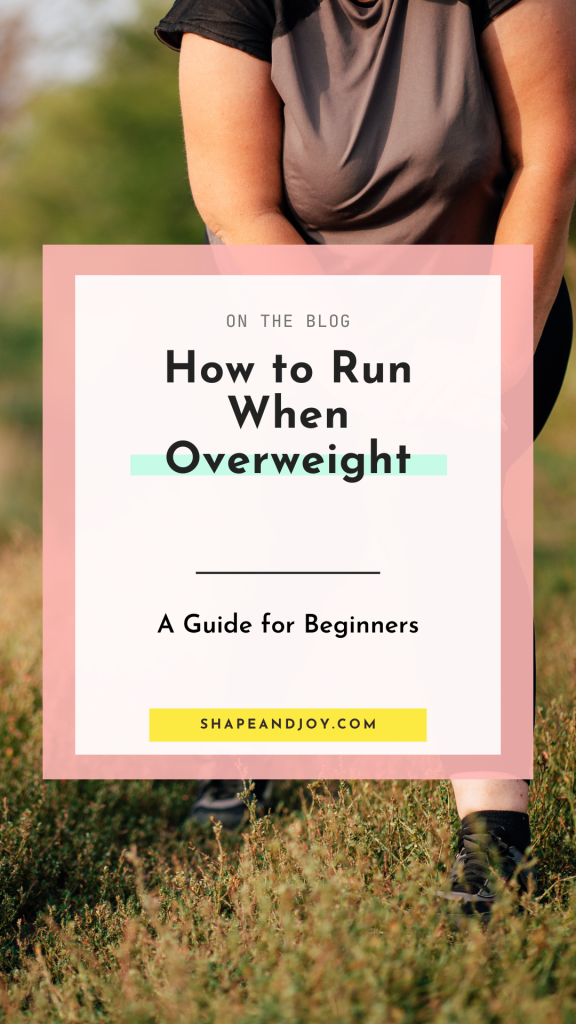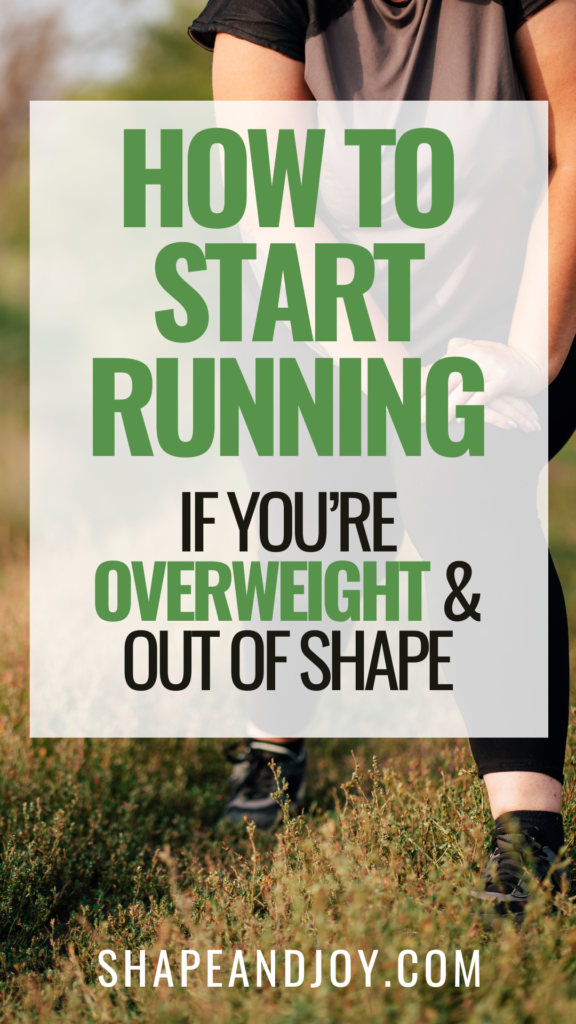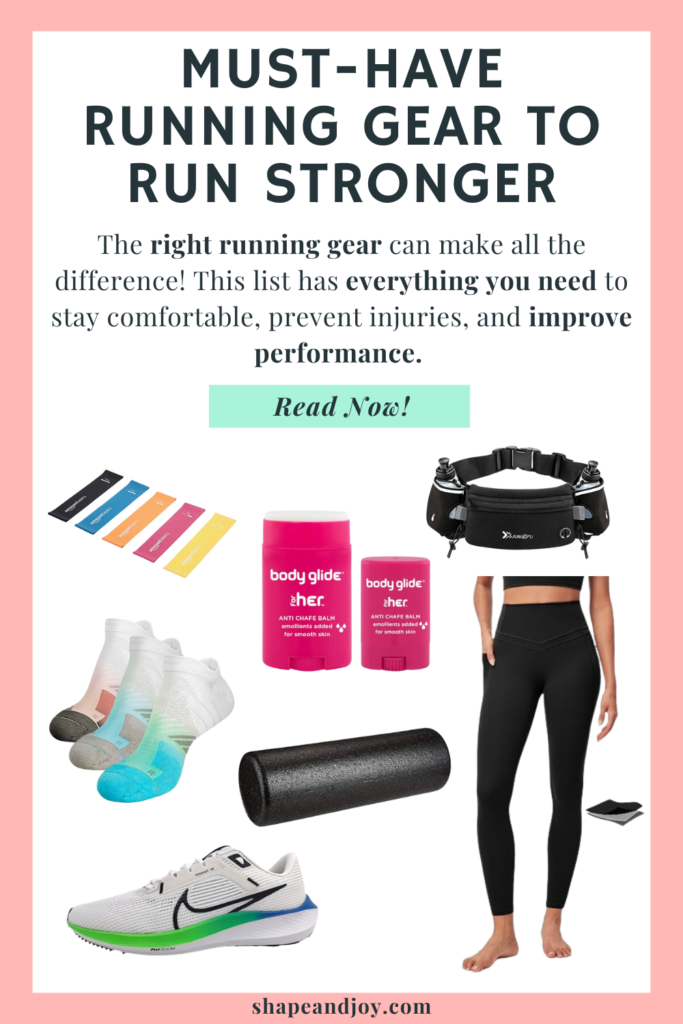This post may contain affiliate links, which means that I may earn a commission if you click on the link, with no cost for you. It’s one of the ways I support my blog. You can read more about this here.

So, you’ve decided to start running. Brilliant choice! Whether it’s for weight loss, fitness, stress relief, or just proving to yourself that you can do it, I’m here to tell you: YES, YOU CAN.
Now, if you’re carrying extra weight, I get it—running can feel intimidating.
Maybe you’re worried about injuries, stamina, or looking out of place, or maybe you’re convinced you’ll collapse after 30 seconds. Trust me, I’ve been there. When I first started, I thought running was reserved exclusively for the super-fit.
But here’s the truth—running is for EVERYONE, no matter your size, shape, or fitness level.
And guess what? You don’t need to be thin to be a runner. You just need to start.
This guide will help you get going the right way—without injuries, without embarrassment, and without quitting after one attempt. So, lace up, take a deep breath, and let’s get moving!
Oh, and if you’re here because you’re trying to lose weight through running, don’t miss Running for Weight Loss: How to Maximise Fat Burn for a breakdown on how to burn fat efficiently while running.
1. Forget What You Think a “Runner” Looks Like
First things first—ditch the idea that running is only for slim, fast, athletic types. That’s a load of rubbish. Running is for anyone who wants to move their body, push themselves, and feel amazing while doing it.
If you’re worried about judgment, let me tell you this—most runners are too busy trying to breathe to care what anyone else is doing. And if anyone dares to judge? That sounds like a ‘them’ problem!
2. Start With Walking (Yes, Really)
I know, I know—you came here to learn about running, not walking. But hear me out. If you’re starting from scratch, jumping straight into running is a surefire way to feel like you’re dying after 30 seconds.
The best way to ease into it? A run-walk approach.
- Walk briskly for 5 minutes to warm up.
- Jog for 30 seconds to 1 minute, then walk for 2 minutes.
- Repeat this cycle for 20-30 minutes.
- Cool down with 5 minutes of walking.
Gradually, you’ll increase the running time and shorten the walking breaks—until you’re running for longer periods without stopping.
3. Get the Right Running Shoes (Your Knees Will Thank You)
Running in the wrong shoes is like trying to hike a mountain in flip-flops. It’s a disaster waiting to happen. Proper running shoes are an absolute must, especially if you’re carrying extra weight—because your joints need all the support they can get.
Here’s what to look for:
- Cushioning to absorb impact and protect your knees.
- Good arch support to prevent foot pain.
- Wide fit options if you need extra space for comfort.
If you’re not sure where to start, check out The Best Running Shoes for Beginners. Your feet, knees, and lower back will be grateful.
4. Pace Yourself (Slow is Still Running!)
One of the biggest mistakes beginners make? Going too fast, too soon. They sprint out of the gate, burn out in 60 seconds, and then decide running “just isn’t for them.”
Let me be clear—speed does NOT matter right now. What matters is consistency. Run slowly. Slower than you think you need to. If you feel like you could go faster, you’re doing it right.
Here’s a good rule:
- If you can’t hold a conversation while running, slow down.
- If you feel like you’re sprinting, slow down.
- If you’re gasping for air, slow down.
Speaking of gasping for air—if breathing is a struggle for you while running, check out Breathing Techniques for Running. Proper breathing makes a massive difference!
📌 Pin this for later! ⬇

5. Protect Your Knees & Joints
Running can be tough on your knees—especially if you’re carrying extra weight. But that doesn’t mean you shouldn’t run. It just means you need to be smart about it.
- Run on softer surfaces (grass, trails, treadmills) instead of hard pavement.
- Strength train twice a week (squats and lunges will help stabilise your knees).
- Stretch and foam roll after every run to keep your muscles loose.
- Don’t ignore pain—if something hurts, rest and recover.
If injuries are a concern, read How to Prevent & Recover from Running Injuries for a full guide on staying pain-free while training.
6. Fuel & Hydrate Properly
Running takes energy. If you’re under-eating or dehydrated, your runs will feel awful. Simple as that.
- Pre-run snack: A banana, toast with peanut butter, or a protein shake.
- Post-run: Replenish with protein + carbs (like eggs on toast or a smoothie).
- Drink enough water! Dehydration = exhaustion, headaches, and feeling sluggish.
And don’t fall into the trap of thinking “I ran, so I can eat anything.” Yes, fuel your body, but remember—you still need to be in a calorie deficit for weight loss. If you need help balancing fat loss and energy levels, check out Running for Weight Loss: How to Maximise Fat Burn.
7. Most Importantly—Enjoy It!
I know it sounds mad, but running can actually be fun. Once you stop seeing it as punishment and start focusing on how strong and capable you feel, everything changes.
- Put on a boppy playlist or podcast.
- Run somewhere beautiful (parks, trails, the beach).
- Track your progress and celebrate small wins.
And if you have a bad run? Shake it off. Progress isn’t about being perfect—it’s about showing up, even when it’s tough.
The Ultimate Running Resource Hub – Everything You Need in One Place!
Looking for the best running tips, training plans, gear recommendations, and nutrition advice? This is your one-stop guide to starting strong, improving performance, preventing injuries, and staying motivated. Whether you’re a beginner or looking to level up your runs, these posts will help you every step of the way!
- The Ultimate Running Guide: Tips, Training & Gear
- How to Build a Running Routine That You’ll Actually Stick To
- Common Running Mistakes Beginners Make (And How to Fix Them)
- How to Run When Overweight: A Guide for Beginners
- Running for Weight Loss: How to Maximise Fat Burn
- Running Nutrition: How to Fuel Your Runs Based on Your Goals
- Breathing Techniques for Running: How to Run Without Getting Winded
- How to Prevent & Recover from Running Injuries
- Best Running Shoes for Beginners
Running Is for You, Too
Running when you’re overweight isn’t just possible—it’s empowering. You’ll get stronger, fitter, and more confident with every step.
Start slow, be consistent, listen to your body, and—most importantly—believe in yourself.
If you want a structured approach, check out How to Build a Running Routine That You’ll Actually Stick To—because staying consistent is the real key to progress.
Now, go on—lace up, take that first step, and prove to yourself just how strong you really are.
📌 Pin this for later! ⬇



